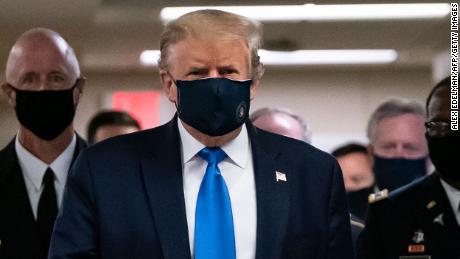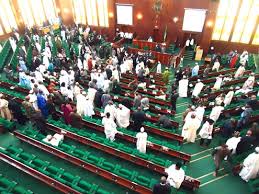Bars are now closed in four Southern states: Louisiana, South Carolina, Texas and Florida, all of them hard hit by the coronavirus surge. Louisiana and South Carolina shut down bars in those states as of 11 p.m. Saturday.
Also on Saturday, President Donald Trump wore a mask in public for the first time ever, while visiting wounded service members at the Walter Reed National Military Medical Center in Bethesda, Maryland.
“I think when you’re in a hospital especially in that particular setting, where you are talking to a lot of soldiers, people that in some cases just got off the operating table,” Trump told reporters Saturday, according to CNN. “I think it’s a great thing to wear a mask. I’ve never been against masks but I do believe they have a time and a place.”
On Saturday, the governor of Louisiana closed down bars in that state, with no reopening date in sight. He also ordered a statewide mask mandate and limited to 50 the number of people who can attend indoor social gatherings, such as weddings.
Similarly, South Carolina banned the sale of alcohol in bars after 11 p.m. Saturday.
Bars in Texas and Florida have been closed since late June. Both Texas and Florida closed bars a few months ago, then reopened them when case numbers appeared to have stalled, only to close them again when casesloads surged again.Subscribe
South Carolina is one of nine U.S. states that recorded record high numbers of positive coronavirus cases on Saturday, according to the New York Times’ latest coronavirus update page. The others are Texas, Alaska, Arkansas, North Carolina, Idaho, Wisconsin, Oregon and Hawaii.
Case numbers are going up and now, after a lag, coronavirus deaths are going up as well: As of Saturday, the single-day death toll in the entire nation was 724, according to the Washington Post. It was 289 COVID deaths a week ago.
Leaders in at least two hard-hit states are considering the possibility of reversing reopenings or imposing new lockdowns as the number of daily coronavirus cases in the United States soared past 68,000 Friday, setting yet another record this week.
In Texas, a state that reported record numbers of daily cases four times this week, Republican Gov. Greg Abbott risked the ire of his party when he threatened a new “economic lockdown” if the state can’t curb the growing number of cases and hospitalizations, according to the New York Times.
In a televised interview, Abbott said “things will get worse” and that he might take drastic steps to contain the virus.
“I made clear that I made this tough decision for one reason: It was our last best effort to slow the spread of COVID-19,” he said.
In Georgia, which reported more than 4,000 new cases on Friday, concerns grew as Gov. Brian Kemp said the state was again transforming an Atlanta convention center into a makeshift medical center, the Times reported.
Meanwhile, Atlanta officials were preparing to shift back to “Phase 1” guidelines, which call for residents to largely stay at home.
At least six states reported single-day records for new cases on Friday: Georgia, Iowa, Montana, North Carolina, Ohio and Utah., according to a Times database.
As of Saturday morning, the United States was approaching 3.2 million confirmed cases of the coronavirus and had surpassed 134,000 deaths, according to a tally by Johns Hopkins University.
The numbers are also showing a long-expected increase in deaths, driven by fatalities in states in the South and West, The Associated Press reported.
According to an AP analysis of data from Johns Hopkins, the seven-day rolling average for daily reported deaths in the U.S. has increased from 578 two weeks ago to 664 on July 10 — still well below the heights hit in April.
Daily reported deaths increased in 27 states over that time period, but the majority of those states are averaging under 15 new deaths per day. A smaller group of states has been driving the nationwide increase in deaths.
The number of deaths per day from the virus had been falling for months, and even remained down as states like Florida and Texas saw explosions in cases and hospitalizations and daily U.S. infections broke records.
Scientists, however, warned it wouldn’t last. When a coronavirus death occurs, it typically comes several weeks after a person is first infected. Experts have predicted states that saw increases in cases and hospitalizations would, at some point, see deaths rise too.
PEABODY, PATCH






